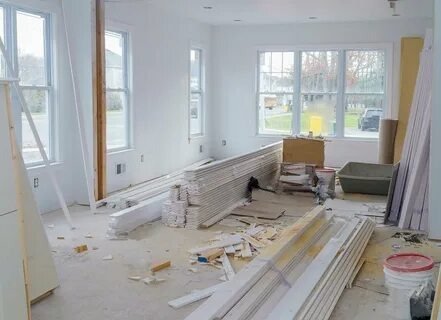Owning an older home can be a dream come true—rich with character, charm, and a sense of history that modern properties often lack. But behind the intricate moldings, antique fixtures, and aged hardwood floors lie hidden challenges that even the most seasoned contractors don’t always openly discuss. Whether you’re a proud owner of a Victorian masterpiece or a quaint mid-century bungalow, maintaining an aging property requires more than surface-level fixes. Let’s uncover the lesser-known truths about keeping an older home in good condition—and the steps you can take to preserve it for generations to come.
1. Not All Repairs Are Urgent—But Delaying the Right Ones Can Be Costly
Many homeowners are quick to assume that every creak in the floorboard or crack in the wall demands immediate attention. While some issues are purely cosmetic or the result of harmless settling, others can signal deeper problems. The trick is knowing which is which.
Unfortunately, contractors don’t always explain that some high-visibility issues—like peeling paint or a squeaky door—can wait, while hidden concerns like moisture intrusion or outdated wiring need priority attention. Addressing hidden structural issues early not only preserves your home’s integrity but can save thousands in future damage.
When it comes to home repairs, proactive maintenance is key. Tackling small leaks before they compromise the foundation or replacing old caulking before water damage sets in can prevent minor concerns from turning into major (and expensive) nightmares. Always perform seasonal inspections, and consider working with a contractor who specializes in older properties—they’re more likely to understand the unique needs of historic homes.
2. Aesthetic Updates Can Sometimes Mask Bigger Problems
It’s tempting to jump into cosmetic upgrades—replacing cabinets, repainting rooms, or installing modern lighting. But looks can be deceiving. Contractors may gloss over the fact that aesthetic improvements often cover up deeper issues. Before you install that beautiful new tile floor, ask whether the subfloor is level and free of rot. That modern backsplash might look great, but it won’t matter if a slow plumbing leak is quietly growing mold behind the walls.
This is especially important when planning home remodelling projects. Renovations that focus purely on appearance without addressing what’s beneath the surface can lead to structural setbacks down the road. Make sure that every design upgrade also includes a check of the infrastructure—plumbing, electrical, insulation, and foundation. It’s not the flashiest part of the job, but it’s the foundation (literally) of long-term stability and comfort in your home.
3. Old Materials Can Be Both a Blessing and a Curse
One thing contractors often don’t share is how older building materials, while durable, may not meet today’s standards—or may even pose health risks. Lead paint, asbestos insulation, and knob-and-tube wiring are all remnants of past construction methods that require special attention during maintenance or upgrades.
Yet, not all old materials are problematic. In fact, many homes built decades ago used higher-quality hardwoods and thicker plaster walls than what’s standard in modern construction. Knowing which materials to preserve and which to replace is essential. A knowledgeable contractor should be able to guide you, but it’s wise to do some research yourself or bring in a home inspector who specializes in vintage homes.
4. Not Every Contractor Understands Historic Structures
This might be one of the most overlooked secrets: not all contractors are created equal—especially when it comes to older homes. While a general contractor might excel at modern builds, they may lack the expertise required for homes built 50+ years ago. Things like settling foundations, outdated framing techniques, or hidden mechanical systems can throw off even experienced professionals.
Make sure to choose a contractor with a portfolio that includes older homes and who understands the importance of preserving historical details while upgrading functionality. Ask for references, view past work, and confirm their familiarity with local codes for heritage properties, if applicable.
5. DIY May Cost You More Than You Save
With the rise of home improvement content online, many homeowners are tempted to take on repairs and upgrades themselves. While this can be a cost-effective route for smaller projects, it’s easy to underestimate the complexity of work in an older home.
Walls may not be square, electrical systems may not be up to code, and what looks like a simple task could turn into a weekend-long ordeal. Even if you have the skillset, you may not have the tools, materials, or knowledge of how the systems were originally installed.
Instead of jumping into the unknown, consult a professional before beginning any major work. In the long run, avoiding costly mistakes and unnecessary damage will more than make up for the upfront cost of expert advice or labor.
6. Water Is Your Home’s Silent Enemy
Contractors often underplay just how destructive water can be to an older home. Whether it’s from a small roof leak, improper grading around your foundation, or clogged gutters, water damage can escalate quickly. And once it takes hold in aging materials—wooden joists, plaster walls, or vintage trim—it can be incredibly difficult (and expensive) to fully remediate.
Stay vigilant by inspecting your home regularly for signs of water intrusion, especially in the attic, basement, and around windows and doors. A small investment in prevention—like sealing windows, updating flashings, or maintaining drainage—can pay off significantly.
Conclusion
Older homes are full of character, charm, and potential—but they also come with their share of hidden challenges. By understanding the secrets contractors don’t always share, you can make smarter decisions and protect your investment for years to come. Whether you’re addressing critical maintenance needs or planning your next renovation, a balance of preservation and modern functionality is the key to keeping your classic home standing strong.
